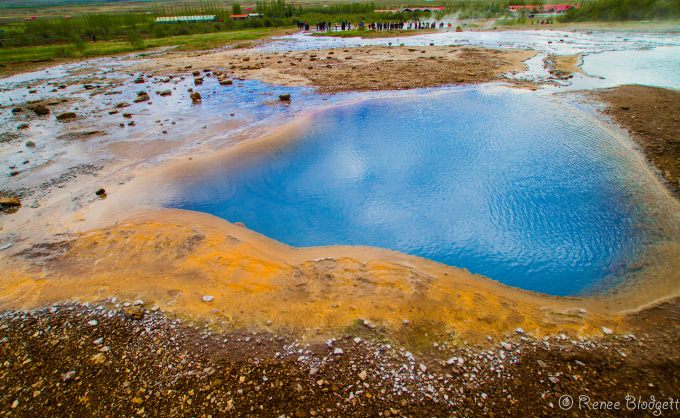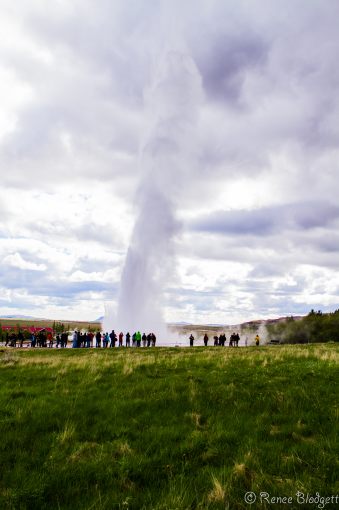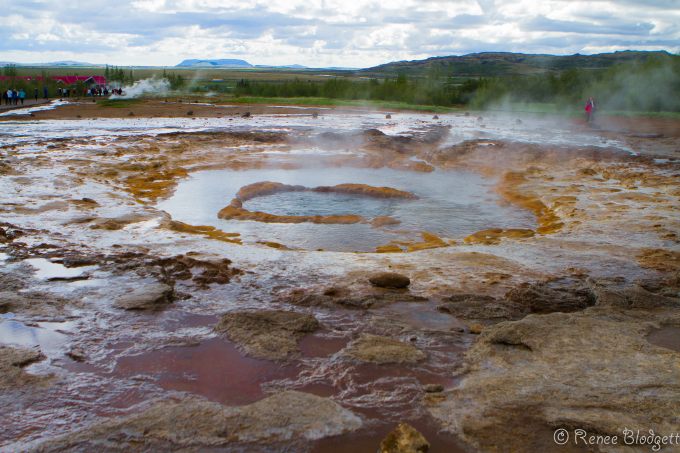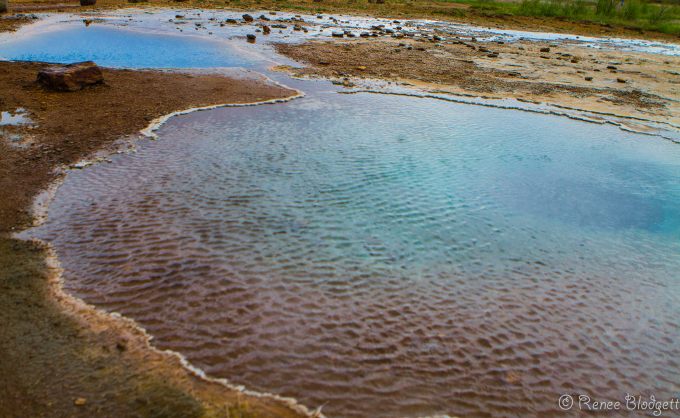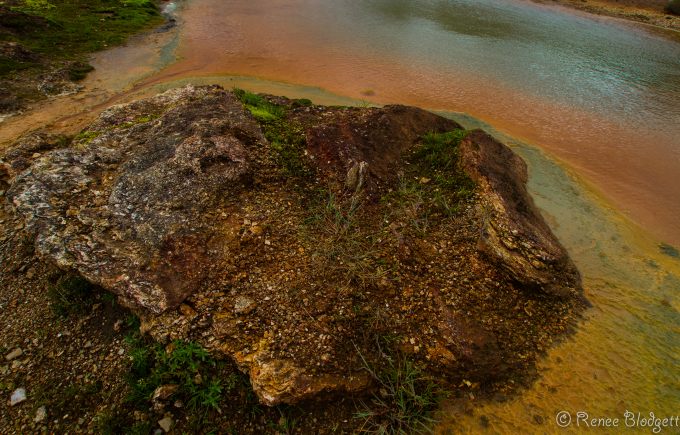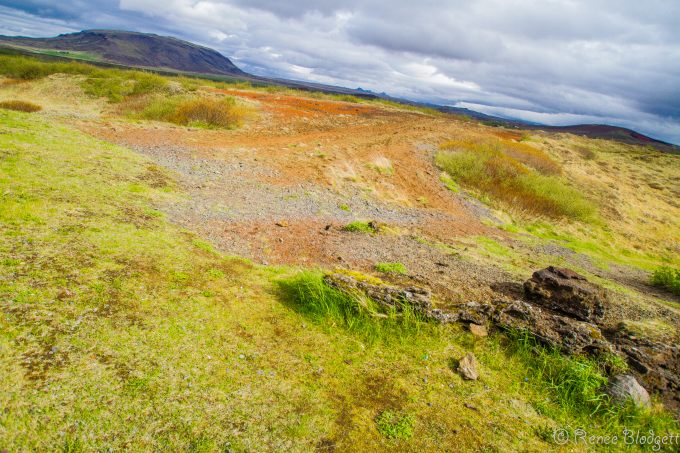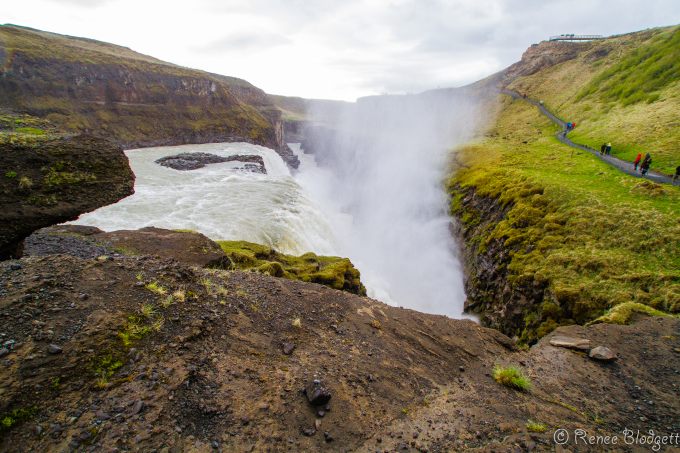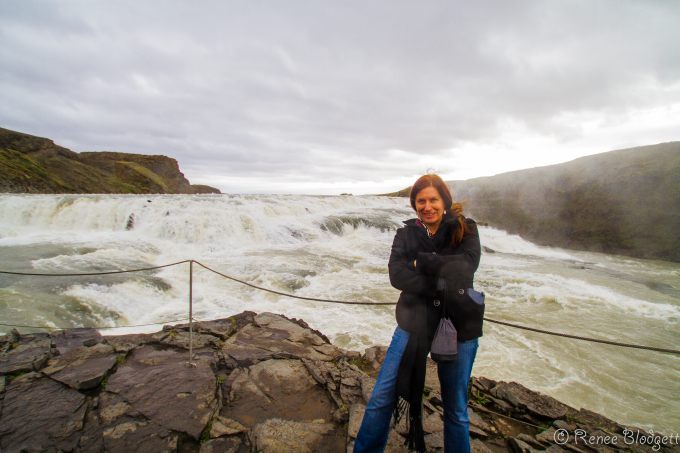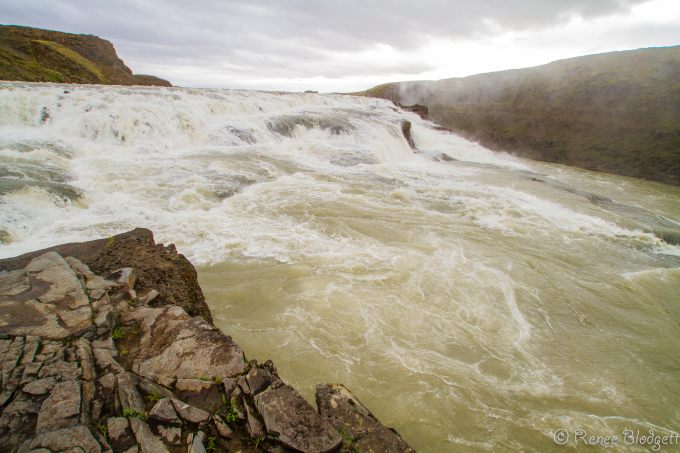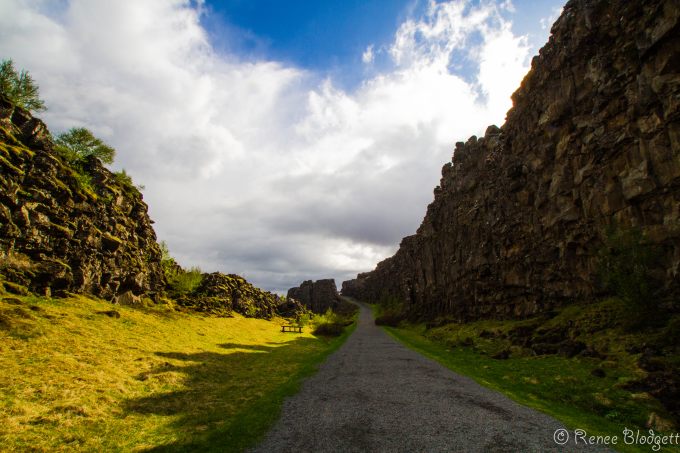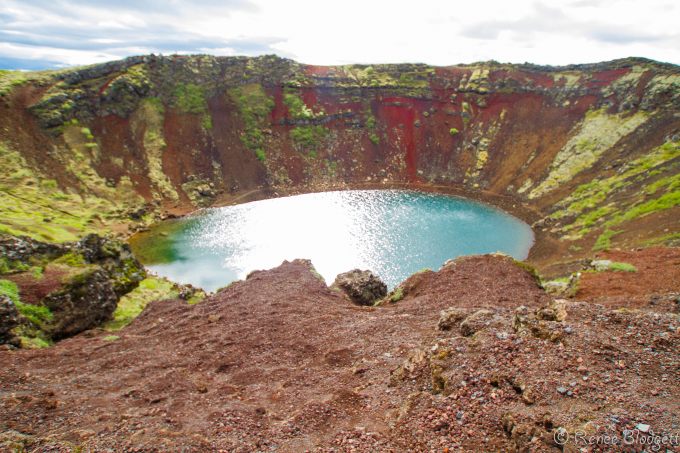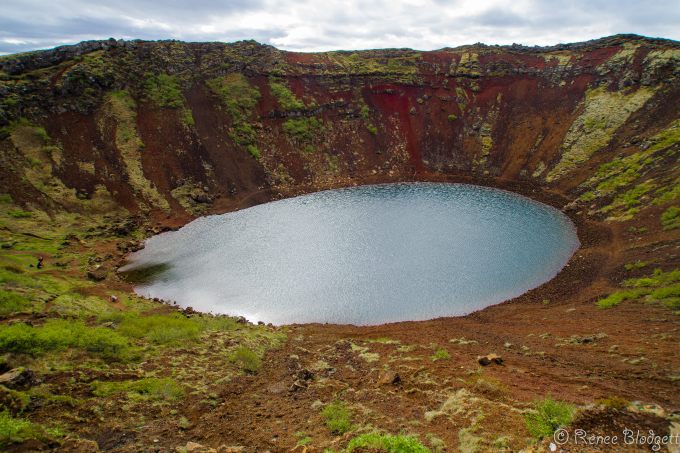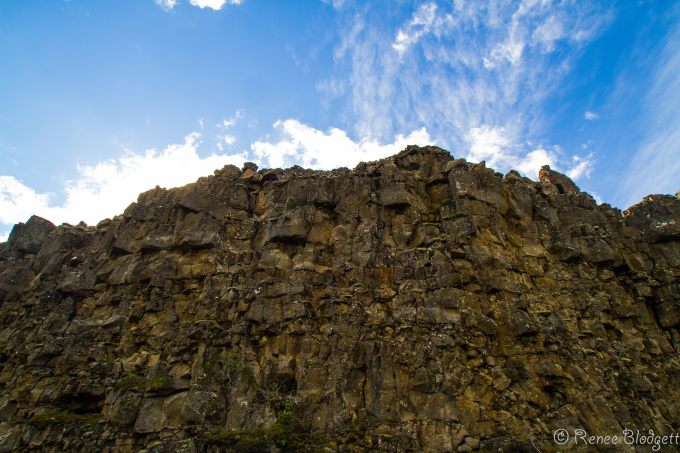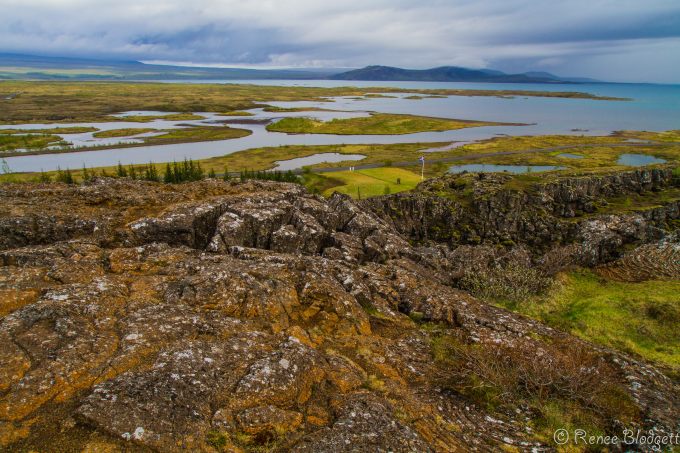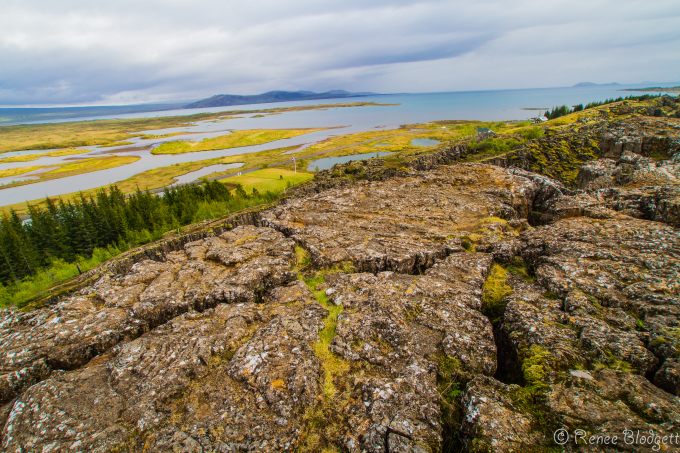One of the most popular tours in Iceland is one most companies and locals refer to as “The Golden Circle” which often leaves from Reykjavik and takes 8-10 hours to do a loop through some of Iceland’s most natural wonders. One of the most natural and beautiful stops is the world-renowned geothermal area around Geysir Hot Springs.
Here you can view the spouting hot spring after which all other spouting hot springs are named.
The thermal area around the geysir is alive with activity and rich in deep rich earth colors.
From there, you can continue onto the Gulfoss Waterfall, also known as the “Golden Waterfall”. The drive to get there is nothing short of breathtaking.
The waterfall is no ordinary one and your proximity to its edge is so close you can feel the spray of the glacial water on your face.
If in this area, be sure to stop at the infamous Þingvellir National Park, which is one of Iceland’s most significant historical sites because it was there that Iceland’s first parliament was founded in the year 930 AD.
Just when you thought the country’s land couldn’t be more vibrant in color, you stop at the Kerid Crater, which is a volcanic crater lake located in the Grímsnes area of south Iceland.
It is one of several crater lakes in the area, known as Iceland’s Western Volcanic Zone, which includes the Reykjanes Peninsula and the Langjökull Glacier, created as the land moved over a localized hotspot. The Kerid Crater is most known for the fact that its visually recognizable caldera is still intact. The caldera, like the other volcanic rock in the area, is composed of a red (rather than black) volcanic rock. The caldera itself is approximately 180 feet deep, 560 feet wide and 890 feet across. Kerið’s caldera is one of the three most recognizable volcanic craters because at approximately 3,000 years old, it is only half the age of most of the surrounding volcanic features. The other two are Seyðishólar and Kerhóll.
While most of the crater is steep-walled with little vegetation, one wall is sloped more gently and blanketed with a deep moss, and can be descended fairly easily. The lake itself is fairly shallow but due to minerals from the soil, is an opaque and strikingly vivid aquamarine.
From there, you can head to the the Langjokull Glacier. Before you hit snow and ice however, you will be greeted with more stunning landscape, vegetation and rock formations.
And, views that stretch for miles.
Note: I was hosted by Mountaineers of Iceland, which has been operating adventure tours in Iceland since 1996. I’d recommend taking one of their tours as their guides are knowledgeable and passionate about the area — my guide’s name was Sveinn btw if you’re interested in requesting him. They specializing in Super Jeeps and snowmobile tours, mainly in the south western part of Iceland. All opinions expressed however are entirely my own.
For more on Iceland, check out Iceland section / Travel to Iceland / Traveling to Iceland. All photos Renee Blodgett.

Renee Blodgett is the founder of We Blog the World. The site combines the magic of an online culture and travel magazine with a global blog network and has contributors from every continent in the world. Having lived in 10 countries and explored nearly 80, she is an avid traveler, and a lover, observer and participant in cultural diversity.
She is also the CEO and founder of Magic Sauce Media, a new media services consultancy focused on viral marketing, social media, branding, events and PR. For over 20 years, she has helped companies from 12 countries get traction in the market. Known for her global and organic approach to product and corporate launches, Renee practices what she pitches and as an active user of social media, she helps clients navigate digital waters from around the world. Renee has been blogging for over 16 years and regularly writes on her personal blog Down the Avenue, Huffington Post, BlogHer, We Blog the World and other sites. She was ranked #12 Social Media Influencer by Forbes Magazine and is listed as a new media influencer and game changer on various sites and books on the new media revolution. In 2013, she was listed as the 6th most influential woman in social media by Forbes Magazine on a Top 20 List.
Her passion for art, storytelling and photography led to the launch of Magic Sauce Photography, which is a visual extension of her writing, the result of which has led to producing six photo books: Galapagos Islands, London, South Africa, Rome, Urbanization and Ecuador.
Renee is also the co-founder of Traveling Geeks, an initiative that brings entrepreneurs, thought leaders, bloggers, creators, curators and influencers to other countries to share and learn from peers, governments, corporations, and the general public in order to educate, share, evaluate, and promote innovative technologies.

